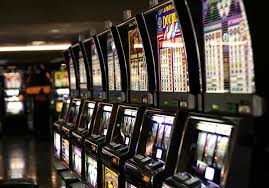
Breaking News
 How a 27-Year-Old Codebreaker Busted the Myth of Bitcoin's Anonymity
How a 27-Year-Old Codebreaker Busted the Myth of Bitcoin's Anonymity
 Old World Order is COLLAPSING: The Death of Europe and the Rise of China
Old World Order is COLLAPSING: The Death of Europe and the Rise of China
 Energy Secretary Expects Fusion to Power the World in 8-15 Years
Energy Secretary Expects Fusion to Power the World in 8-15 Years
 South Koreans Feel Betrayed Over Immigration Raid, Now Comes the Blowback
South Koreans Feel Betrayed Over Immigration Raid, Now Comes the Blowback
Top Tech News
 Tesla Megapack Keynote LIVE - TESLA is Making Transformers !!
Tesla Megapack Keynote LIVE - TESLA is Making Transformers !!
 Methylene chloride (CH2Cl?) and acetone (C?H?O) create a powerful paint remover...
Methylene chloride (CH2Cl?) and acetone (C?H?O) create a powerful paint remover...
 Engineer Builds His Own X-Ray After Hospital Charges Him $69K
Engineer Builds His Own X-Ray After Hospital Charges Him $69K
 Researchers create 2D nanomaterials with up to nine metals for extreme conditions
Researchers create 2D nanomaterials with up to nine metals for extreme conditions
 The Evolution of Electric Motors: From Bulky to Lightweight, Efficient Powerhouses
The Evolution of Electric Motors: From Bulky to Lightweight, Efficient Powerhouses
 3D-Printing 'Glue Gun' Can Repair Bone Fractures During Surgery Filling-in the Gaps Around..
3D-Printing 'Glue Gun' Can Repair Bone Fractures During Surgery Filling-in the Gaps Around..
 Kevlar-like EV battery material dissolves after use to recycle itself
Kevlar-like EV battery material dissolves after use to recycle itself
 Laser connects plane and satellite in breakthrough air-to-space link
Laser connects plane and satellite in breakthrough air-to-space link
 Lucid Motors' World-Leading Electric Powertrain Breakdown with Emad Dlala and Eric Bach
Lucid Motors' World-Leading Electric Powertrain Breakdown with Emad Dlala and Eric Bach
 Murder, UFOs & Antigravity Tech -- What's Really Happening at Huntsville, Alabama's Space Po
Murder, UFOs & Antigravity Tech -- What's Really Happening at Huntsville, Alabama's Space Po
Russians Engineer a Brilliant Slot Machine Cheat--And Casinos Have No Fix

In early June 2014, accountants at the Lumiere Place Casino in St. Louis noticed that several of their slot machines had—just for a couple of days—gone haywire. The government-approved software that powers such machines gives the house a fixed mathematical edge, so that casinos can be certain of how much they'll earn over the long haul—say, 7.129 cents for every dollar played. But on June 2 and 3, a number of Lumiere's machines had spit out far more money than they'd consumed, despite not awarding any major jackpots, an aberration known in industry parlance as a negative hold. Since code isn't prone to sudden fits of madness, the only plausible explanation was that someone was cheating.
Casino security pulled up the surveillance tapes and eventually spotted the culprit, a black-haired man in his thirties who wore a Polo zip-up and carried a square brown purse. Unlike most slots cheats, he didn't appear to tinker with any of the machines he targeted, all of which were older models manufactured by Aristocrat Leisure of Australia. Instead he'd simply play, pushing the buttons on a game like Star Drifter or Pelican Pete while furtively holding his iPhone close to the screen.
He'd walk away after a few minutes, then return a bit later to give the game a second chance. That's when he'd get lucky. The man would parlay a $20 to $60 investment into as much as $1,300 before cashing out and moving on to another machine, where he'd start the cycle anew. Over the course of two days, his winnings tallied just over $21,000. The only odd thing about his behavior during his streaks was the way he'd hover his finger above the Spin button for long stretches before finally jabbing it in haste; typical slots players don't pause between spins like that.
On June 9, Lumiere Place shared its findings with the Missouri Gaming Commission, which in turn issued a statewide alert. Several casinos soon discovered that they had been cheated the same way, though often by different men than the one who'd bilked Lumiere Place. In each instance, the perpetrator held a cell phone close to an Aristocrat Mark VI model slot machine shortly before a run of good fortune.



